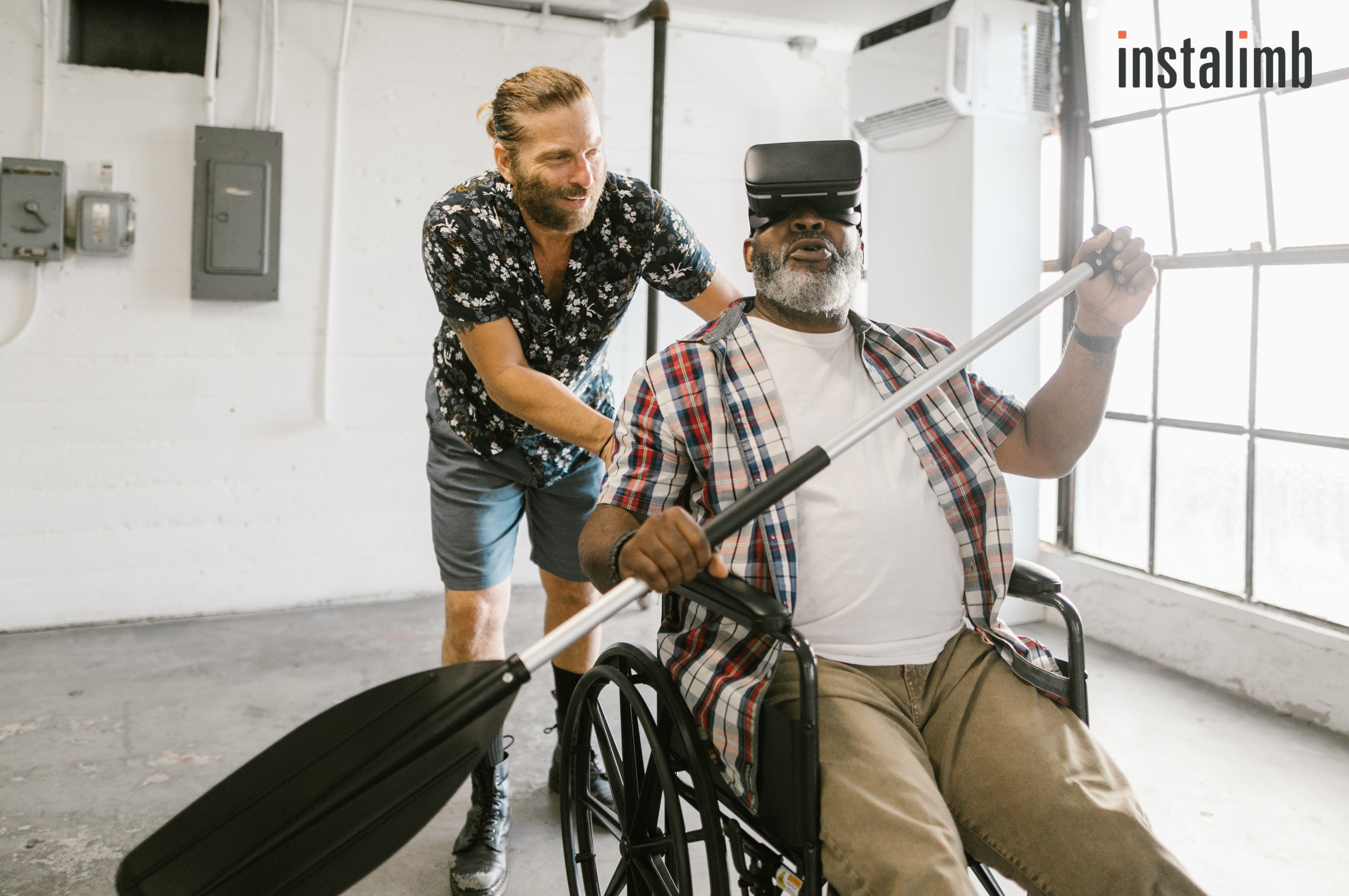The landscape of rehabilitation for amputees is evolving rapidly, thanks to groundbreaking advancements in technology. One of the most exciting developments is the use of virtual reality (VR) in the rehabilitation process. VR offers immersive and interactive experiences that significantly enhance physical and psychological recovery for amputees. So let’s explore how virtual reality is transforming rehabilitation and opening new frontiers for amputees.
What is Virtual Reality?
Virtual reality is a computer-generated simulation that creates a realistic, immersive environment. You can interact with this environment using special equipment, such as VR headsets and motion sensors. So many people have used VR in various fields, including gaming, education, and healthcare, to provide unique and engaging experiences.
The Role of Virtual Reality in Rehabilitation
Virtual reality is becoming a valuable tool in the rehabilitation of amputees. Additionally, it offers numerous benefits that traditional therapy methods may not provide. Hence, here are some key ways VR is being integrated into rehabilitation:
1. Enhanced Physical Therapy
– VR creates customized exercises that mimic real-world activities. These exercises help amputees improve their balance, coordination, and strength in a controlled, safe environment. So by simulating daily tasks, VR allows you to practice and refine your movements, making the transition to everyday life smoother.
2. Pain Management
– VR shows promise in managing phantom limb pain (PLP), a common issue for many amputees. The immersive experience can distract your brain from pain signals, reducing the perception of pain. Some VR programs also simulate the presence of the missing limb, allowing you to “move” it and alleviate PLP through visual and sensory feedback.
3. Motivation and Engagement
– Traditional rehabilitation exercises can be repetitive and monotonous, leading to decreased motivation. VR makes rehabilitation more engaging and enjoyable by turning exercises into interactive games and challenges. Additionally, this increased engagement can lead to better adherence to therapy programs and improved outcomes.
4. Psychological Support
– Amputation can have significant psychological impacts, including anxiety, depression, and body image issues. So VR provides therapeutic environments that help you cope with these challenges. For example, virtual support groups or guided relaxation sessions offer emotional support and reduce feelings of isolation.
Real-World Applications and Success Stories
Several rehabilitation centers and research institutions already harness the power of VR to aid amputees in their recovery journey. For instance, the “Virtual Reality Medical Center” has developed VR programs that help amputees with pain management and motor function rehabilitation. Additionally, the “University of Southern California Institute for Creative Technologies” has created VR simulations that assist veterans with limb loss in overcoming physical and psychological challenges.
One notable success story involves a military veteran who lost a limb in combat. Using a VR rehabilitation program, he practiced walking and performing daily tasks in a virtual environment. This immersive therapy helped him regain confidence and mobility, significantly improving his quality of life.
Future Directions and Innovations
The potential of VR in rehabilitation is vast, and ongoing research continues to explore new applications and improvements. Future innovations may include:
1. Advanced Haptic Feedback
– Enhancing VR experiences with tactile feedback can make simulations even more realistic and beneficial. You could feel textures and resistance, further improving your rehabilitation exercises.
2. Personalized Rehabilitation Plans
– AI-driven VR programs could analyze your progress and adapt exercises in real time, providing a tailored rehabilitation experience.
3. Tele-rehabilitation
– VR technology can facilitate remote rehabilitation sessions, allowing you to access therapy from the comfort of your home. This can be particularly beneficial if you have limited access to rehabilitation centers.
Virtual reality is revolutionizing the rehabilitation process for amputees, offering innovative solutions for physical and psychological recovery. So by providing immersive, engaging, and effective therapy, VR helps amputees regain their independence and improve their quality of life. As technology continues to advance, the future of VR in rehabilitation looks incredibly promising. At Instalimb, we are committed to staying at the forefront of these advancements and supporting amputees in their journey toward recovery and empowerment.
If you’re looking for a new artificial leg, interested in a free consultation, confused if your socket is the right fit, or have any other queries, now is the time to reach out to us and try a test socket free of cost. Step it up with Instalimb – Contact us today!


